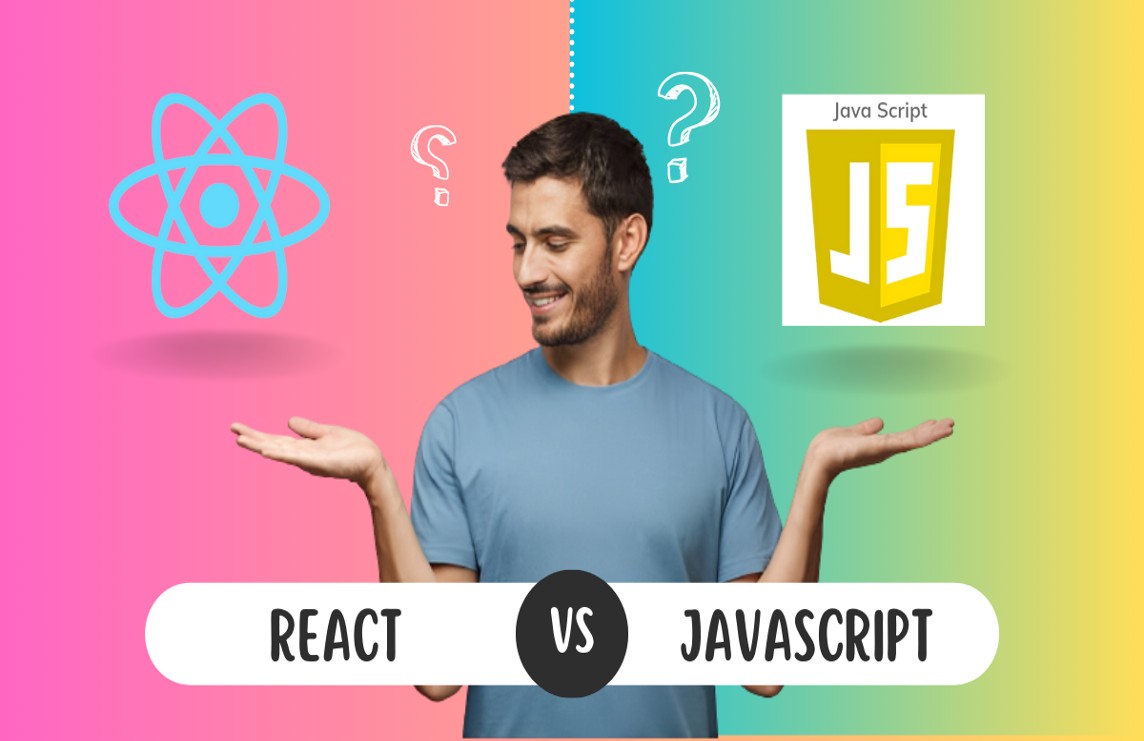Introduction: JavaScript vs ReactJS
In the world of web development, JavaScript and React are two powerful tools that developers often use to create dynamic and interactive web applications. JavaScript is a versatile programming language that can be used on both the client-side and server-side, while React is a popular JavaScript library for building user interfaces. Understanding when to use JavaScript and when to choose React can greatly impact the efficiency and effectiveness of your web development projects. In this practical guide, we will explore the key factors to consider when making this decision and provide insights to help you choose the right tool for your specific needs.
JavaScript:
JavaScript is a programming language that enables the creation of dynamic and interactive web pages. It is supported by all major web browsers and offers a wide range of functionalities, including manipulating the Document Object Model (DOM), handling user interactions, making asynchronous requests, and performing complex calculations. JavaScript can be used for both client-side and server-side development, making it a versatile choice for web developers.
When to Use JavaScript:
- Basic Interactivity: When you need to add simple interactivity to your web pages, such as form validation, changing content based on user input, or creating simple animations, JavaScript is often sufficient. Its lightweight nature and broad compatibility make it an ideal choice for such scenarios.
- DOM Manipulation: JavaScript provides powerful tools for manipulating the DOM, allowing you to dynamically modify the content and structure of web pages. If you primarily require DOM manipulation without complex state management, JavaScript alone can be a suitable option.
- Server-Side Development: JavaScript can also be used on the server-side, thanks to frameworks like Node.js. If you’re working on a full-stack project and prefer a unified language for both front-end and back-end development, JavaScript offers a seamless experience.
React:
React, developed by Facebook, is a JavaScript library specifically designed for building user interfaces. It introduces a component-based architecture, allowing developers to create reusable UI components that efficiently manage state and render updates. React utilizes a virtual DOM to optimize performance by selectively updating only the necessary parts of the user interface.
When to Choose React:
- Complex User Interfaces: React shines when building complex user interfaces that require frequent updates and interactive elements. Its component-based structure enables the development of modular and reusable UI components, making it easier to manage and scale large applications.
- Single-Page Applications (SPAs): If you’re building a single-page application with a rich user interface and dynamic content, React is an excellent choice. It efficiently handles updates, improves performance, and ensures a seamless user experience by minimizing the need for page reloads.
- Team Collaboration: React’s popularity and extensive community support make it an attractive choice for team collaboration. Its component-based nature, combined with well-established patterns and best practices, allows developers to work cohesively on large-scale projects.
Conclusion:
Knowing when to use JavaScript and when to choose React is essential for making informed decisions in web development. JavaScript is a versatile language suitable for basic interactivity, DOM manipulation, and server-side development. On the other hand, React excels at building complex user interfaces, SPAs, and fostering efficient collaboration in teams. By understanding the strengths and use cases of each, you can select the right tool for your project and leverage their capabilities to deliver high-quality web applications.
Remember, the decision to use JavaScript or React ultimately depends on the specific requirements, complexity, and goals of your project. Stay updated with the latest trends and advancements in both JavaScript and React to ensure you make the most informed choices in your web development journey.


Leave A Comment